A career without compromise: The music photography of Wendy McDougall
The first image you see on entering Wendy McDougall's 40-year retrospective is a large, black and white crowd shot surveying thousands of people gathered at INXS' 1992 Concert for Life.
It's a photograph she's often stared into, curious about the people and why she does not recognise a single face in a crowd of many friends. Until, during the lead up to her exhibition, the faces began to recognise her.
"Facebook found one girl and suggested she was the girl in the image," recalls McDougall. "This is her 25 years ago. She is in there with a whole group of people in the front of the photo. She contacted me. Having someone approach me at this time was a bit spooky but amazing."
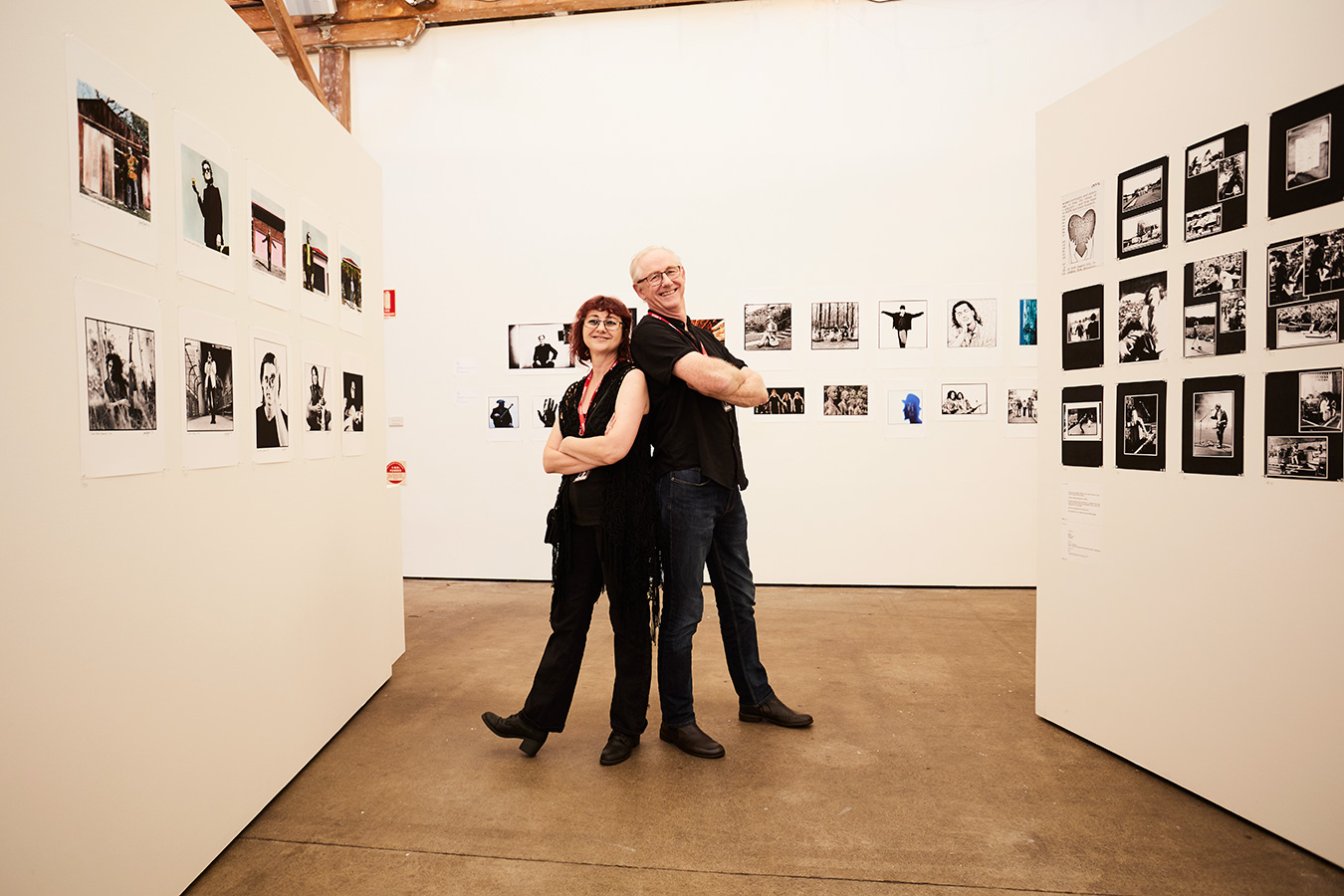
Wendy McDougall and musician Mark Callaghan from GANGgajang who helped launch her milestone exhibition. Image by Steve Harnacke.
_______
The woman is pictured with friends out seeing one of Australia's most iconic bands at the height of their career. Three months later one of those friends would sadly drown. Twenty-five years later, the remaining group would gather at McDougall's exhibition launch looking back into that moment printed larger than life.
"That photo has now become so much more to me than being the right one for that place on the wall," said McDougall. "And it's still giving – someone else turned up today and told me they are in the back of the crowd somewhere."
More have emerged from the other side of the lens, including a member of the Hoodoo Gurus who was surprised by his never-before-seen portrait – perhaps lost during a change of management – and bought it. Throughout the Sydney exhibition in April Wendy has enjoyed each reunion and also first encounters with many who do not feature in her work but for whom the times and the sounds of younger days trigger memories and sometimes tears.
"I've only really recently come to notice it has been 40 years shooting music. Thirty sounds like a lot but I could not have shown work on this scale or had this response ten years ago. Forty years spans a couple of generations of people and memories. It's making me feel wonderful in fact. The joy this is bringing to people is the most rewarding thing for me. I've realised I had to wait this long before I could do this."
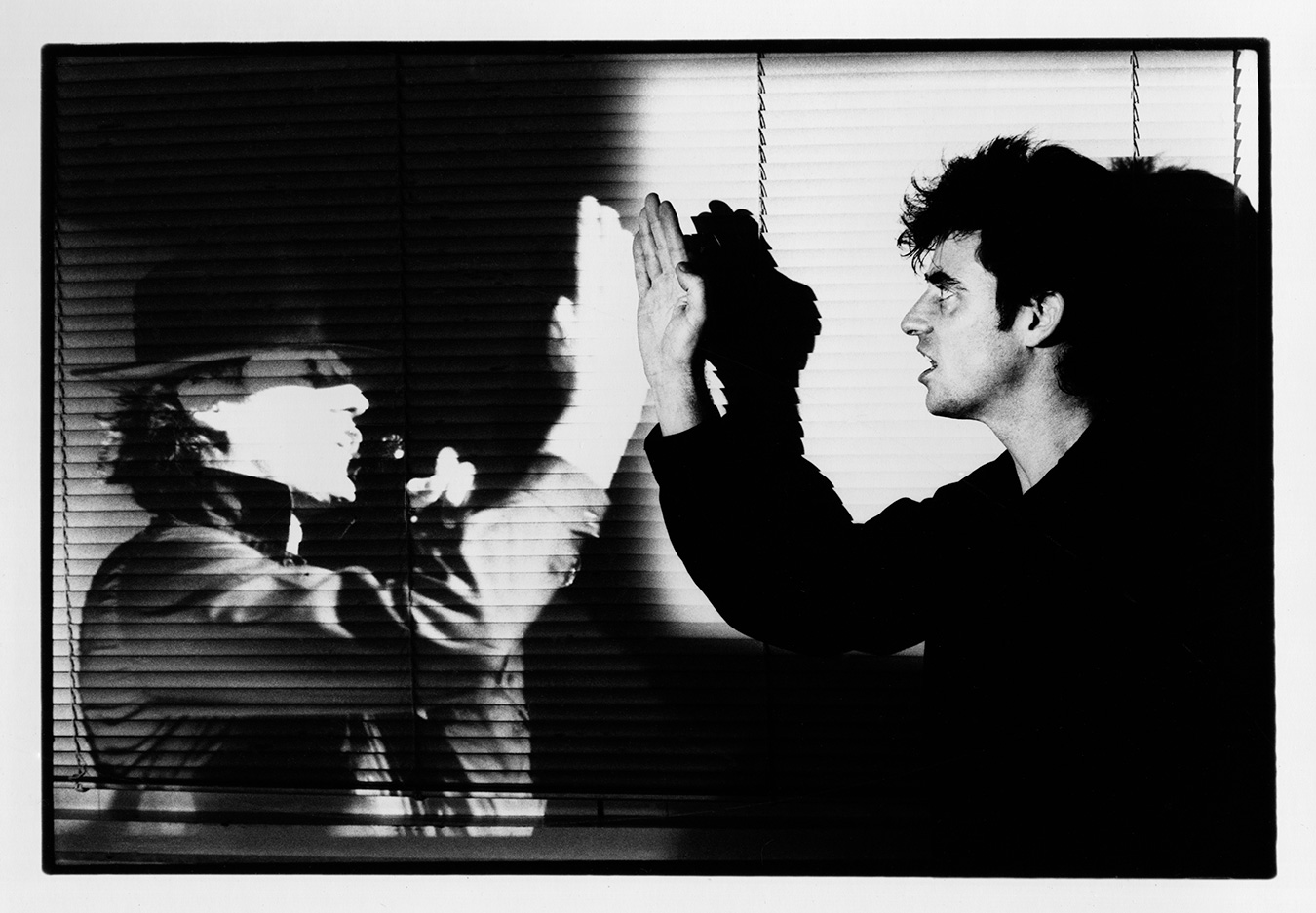
Doc Neeson, The Angels 1986 by Wendy McDougall
_______
McDougall began her career in year eleven at high school when, peeling the back off her first polaroid, she recognised her life's focus. She was a music fan but an impatient music student. In taking a camera to the personalities of Australian music, she found an immediate way to engage with the thriving music scene.
"I decided because Annie Leibovitz did it that I could do it. Through that year of fifth form I soaked up as much photography as possible. I topped that class but at the end of it I knew what I wanted to do. So I left school."
She chose a square format camera to replicate the cover of an LP without cropping and juggled her shoots with jobs in labs where she met other photographers and absorbed as much knowledge about her craft as possible.
In pre-internet Australia much of a band's reputation lent on the strength and frequency of live performances and McDougall was in the audience as often as possible. She quickly sold her first live photograph to The Angels and one of her first portrait sessions conducted off stage was with front man Doc Neeson.
"I took a live image, projected it and had him interact with it - so he is play acting and mimicking to his own image. He loved doing that as he was into characters and German expressionism. My approach was always to make everyone unique. To make it in the world of music you had to sound unique - you had to be unique. So my challenge with every band was to come up with a new idea that I didn't share with anyone else."
McDougall became the official photographer for INXS at the Concert for Life tour in Centennial Park, Sydney, and shot stills during the Crowded House recording for the video clip Don't Dream It's Over. One of the stills became their cover of their single. But her first love was always conceptual portraiture for publicity and cover art, inspired by Leibovitz.
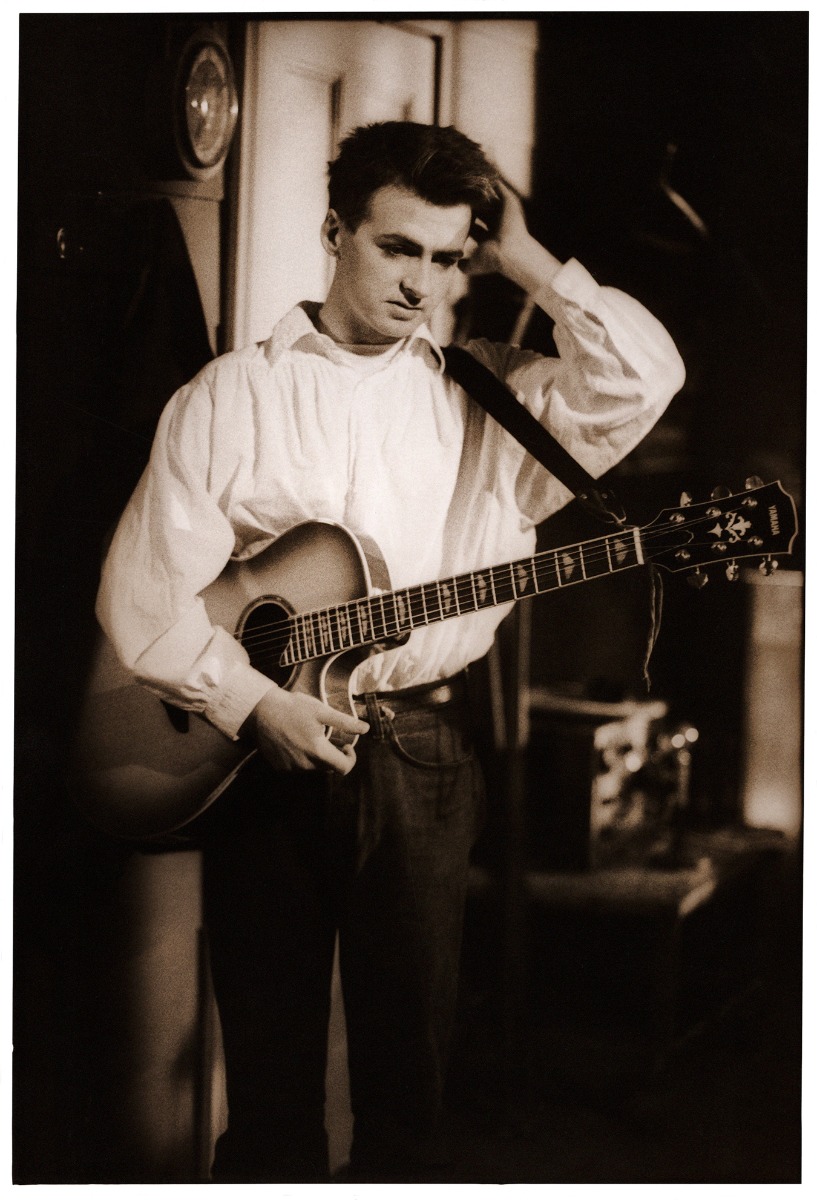
Neil Finn Crowded House 1986, by Wendy McDougall.
_______
"Her images are quite surreal and she photographed big name stars. So I was intrigued by how she talked 'that person' into doing 'that thing'. I always wondered what she said to them to get them to follow her ideas. And eventually I found out that it's kind of easy: You collaborate with someone on a shoot, and if they trust you, you can throw an idea out there and they interact. You just learn to read people and know what ideas you can put on the table."
McDougall's intuition is not always evident to her at the time. In a photoshoot with Grace Knight from the Eurogliders, she included an old sewing dummy that was sitting around her house. After seeing images from the exhibition launch night online, Knight made contact to note how "telling" the portrait seems today as she spent most of her time hunched over a sewing machine in that era, creating the outfits she performed in.
McDougall modestly describes this as a stroke of luck, but the collaborative nature of her photography allowed her subjects to give a lot of themselves in the duration of a shoot.
"The first thing I do when I get a job is to listen – I believe that's the biggest tool in your kit. I ask for the lyrics, I ask for the music in whatever form its ready, and then I try spend time with the person who has the strongest creative angle in the band - there is usually one. A lot of it is finding out what they don't like."
In 2018 McDougall won the inaugural AWMA (Australian Women in Music Award) for Music Photography, something she was grateful for.
"Annie Leibovitz gave me permission to do my job but I have to say that in the next few years I was well aware that this was a mainly male arena I was in. But that was not my main focus. My thing was mastering my craft, finding my confidence - just in me as a photographer. If I had to put being a woman on top of that it would have been a pressure I just didn't need. I was well aware of and very grateful for the generations prior, grateful that they did what they did that allowed me to follow my dreams no matter what. I felt it was my role to just get on with it."
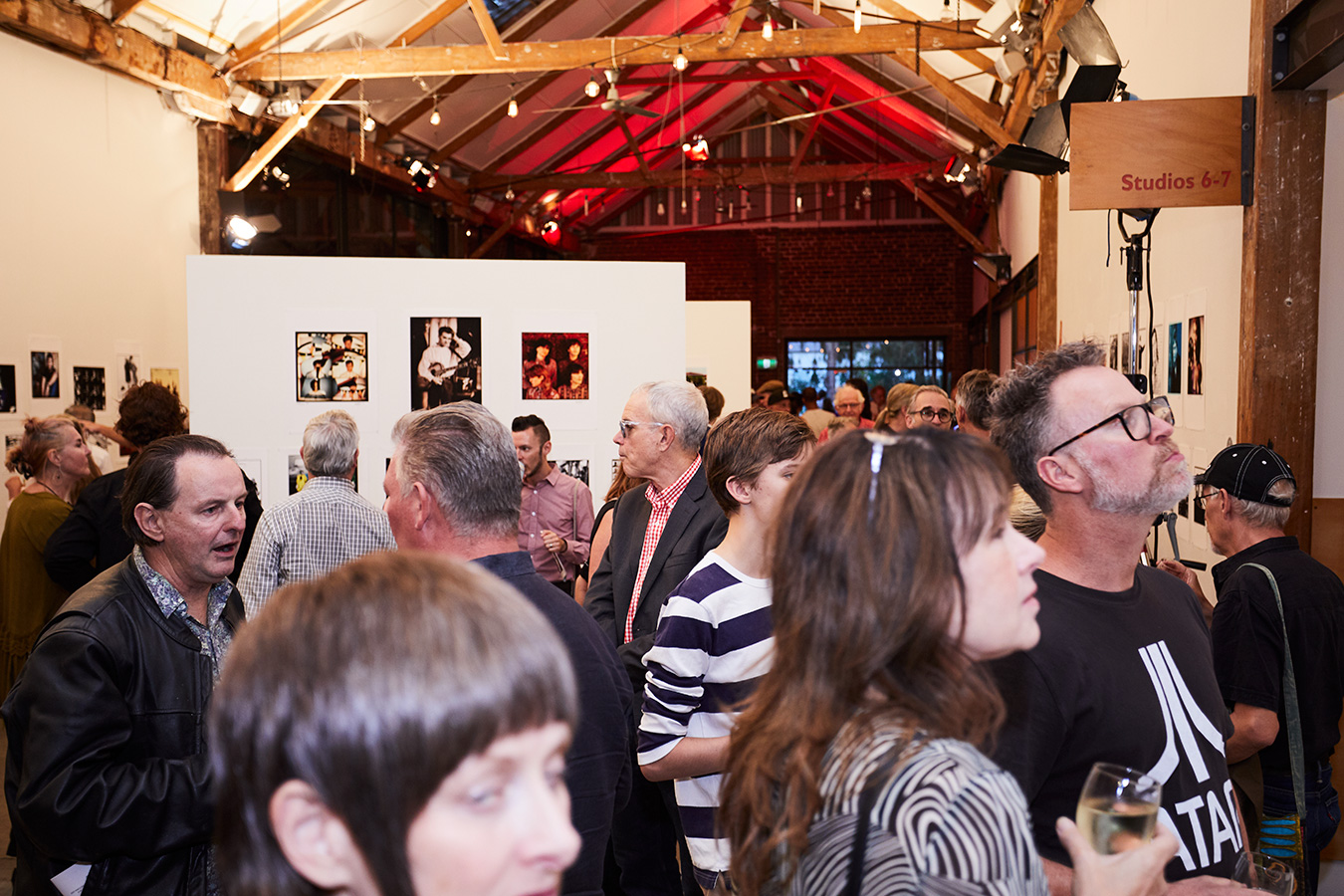
Image by Steve Harnacke.
________
For the first 17 years of her career nothing else existed but music photography for McDougall. But she then reached a point at which it ceased to be about music but rather hard business, and the mantra, "If it ain't fun, it ain't worth doing" was tested.
"I can still remember when I had a shoot with a band called Died Pretty and I really liked the band. Previously a friend and I paid a lawyer to help us genuinely understand our moral rights, copyright and image licencing. This person came up with terms for our quotes outlining the rights of photographer and client. So I got this job from a prominent record label and they were a bit funny about my terms. They said, 'Why don't you go upstairs and see our lawyer and have a chat to him?' It was the guy I had paid money to, and I said, 'You told me this was real.' He replied, 'Yeah I know. And it is. But if you don't like our rules you can walk'. And that was like having a brick thrown at me. That situation really upset me. I kept working but it was representative of all the really large labels and how they operated. They felt they were above the law."
As one of around four major labels providing work at the time, McDougall began to supplement her music photography work by photographing actors – a subject that shared a similar theatricality. She collborated on a contract with Bell Shakespeare, again jumping in the deep end with some of the country's most talented performers. This was where she met Jeremy Sims from Pork Chop Productions who she has worked with ever since.
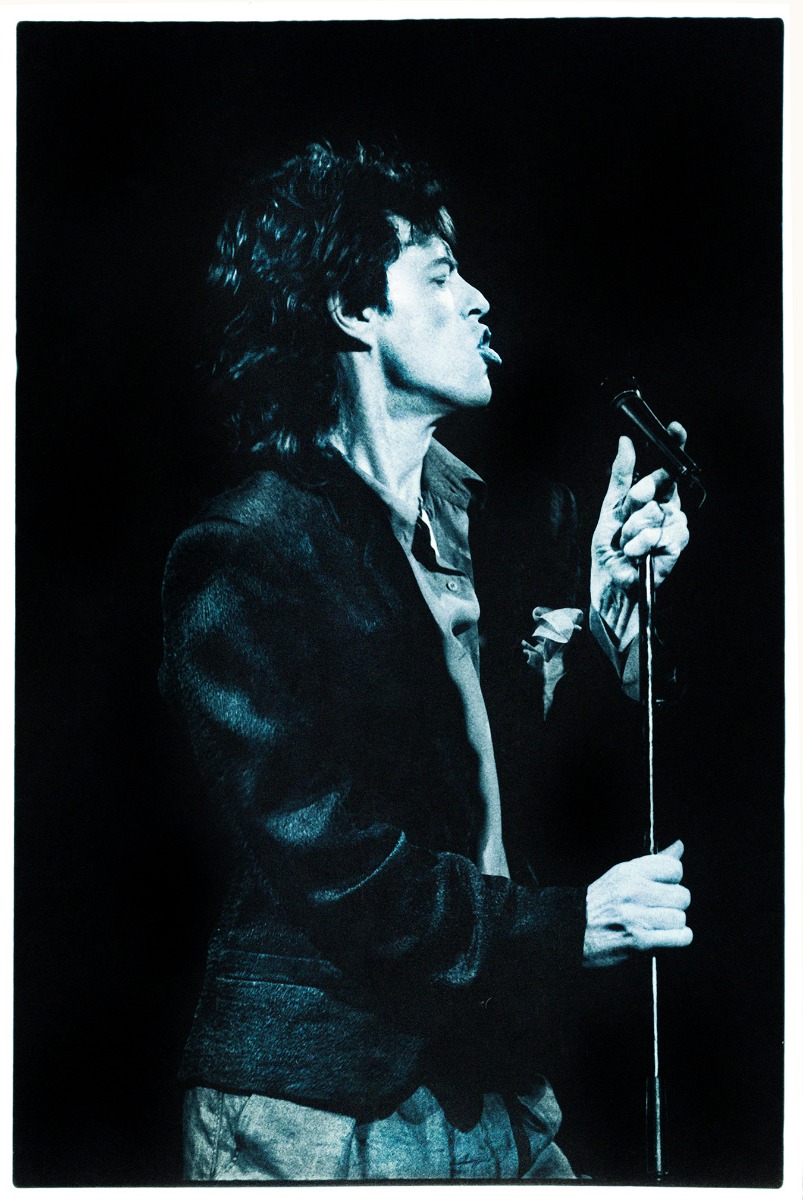
Mick Jagger by Wendy McDougall
_______
Alongside theatre and film she's always maintained her practice of music photography – but on her own terms. It's a position that has not always been the most materially rewarding, and yet she feels richer than most.
Her career retrospective, sponsored by Canon Australia and SUNSTUDIOS, will now travel from Sydney to Melbourne showcasing four decades of commitment to documenting Australian music culture. Curating the ambitious exhibition across a large gallery and four screens was at times an overwhelming process for McDougall.
"I do remember thinking around the 30-year mark, 'I wonder what it will be like at 40?' I never thought beyond 40 years of age – let alone 40 years of career. Naively I have always thought if you work really hard to make a name for yourself in the area you are in at some point people will be interested in what you are putting out. Like U2 or The Stones. When I was younger I stupidly thought they didn't have to work hard after a while. In a way they don't, their next record is guaranteed to sell something. But I realised you don't ever stop working hard. As time goes on and the industry changes, there are more people involved now, and digital means more people are in the game so you have to work even harder to get that next job."
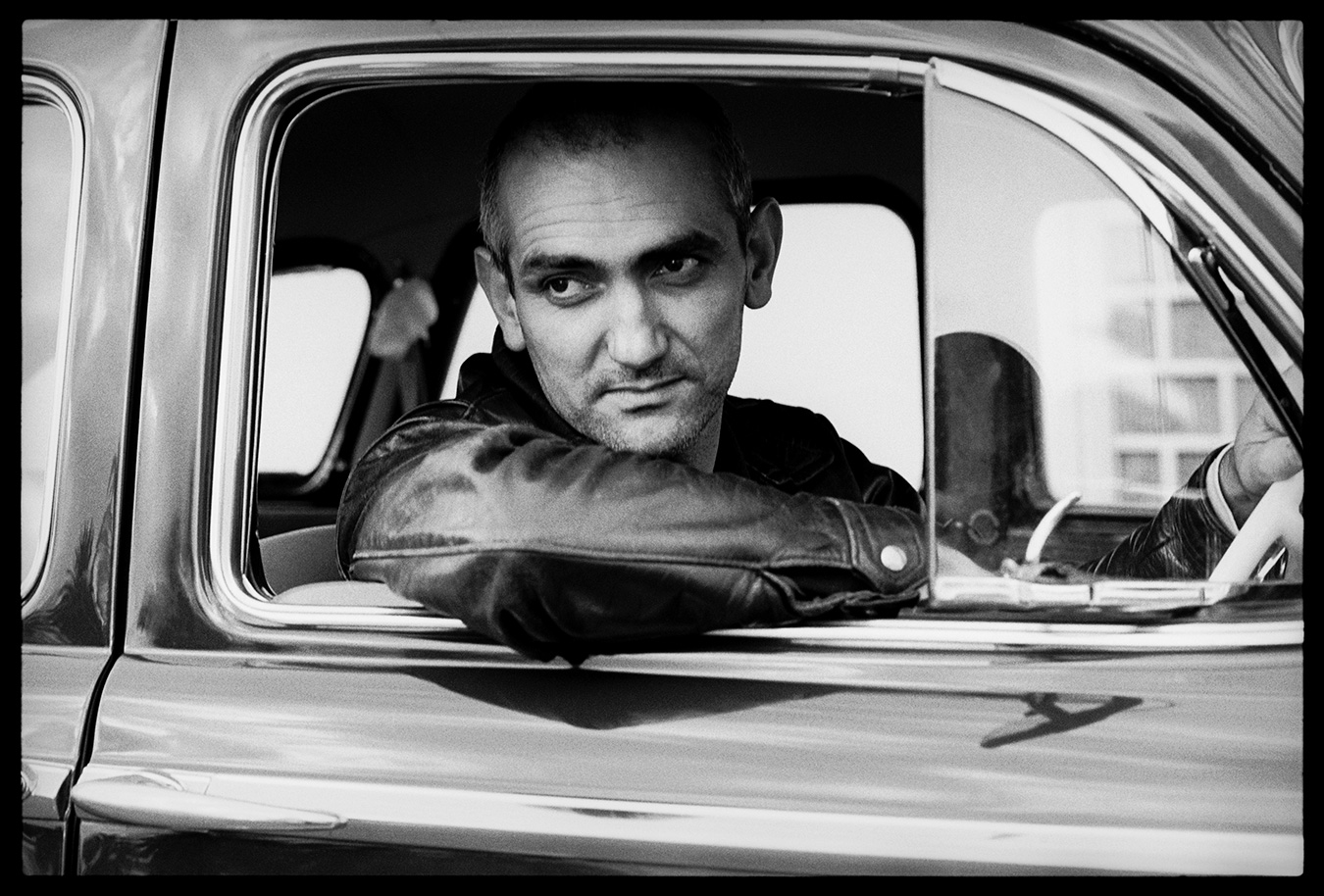
Paul Kelly 1996 by Wendy McDougall.
________
The affirmation gained from watching people experience her lifetime of work in the gallery space of SUNSTUDIOS has helped her know that it has all been worthwhile.
"Seriously, I can't believe what Canon are doing. It makes me want to cry actually. Maybe they didn't know what they were getting themselves in for either! But I didn't realise what that was going to mean to people. Everyone is on a ride with me, supporting me – it's not just me. We are in it together and that is the biggest joy."
The junction of sound, experience and image is something McDougall is increasingly interested in. Music and memory. Music as medicine.
"With aged parents I have noticed how much music has an impact on the brain - that is what it is doing now. Everyone is very present when talking about memories. Put that into the aged community it becomes a medical thing, a science thing, as well. Music is so important to keeping us alive and happy and our brains working. It is one of the last things your brain will recognise."
In the next forty years of her life and career McDougall intends to further distil her archive into a book. But in the short term she's most preoccupied with bringing her exhibition to SUNSTUDIOS Melbourne.
"I'm getting a lot of opportunity through this, new doors opening and jobs. I have spent a lot of time here in Sydney during the exhibition because basically I don't want to miss anything."
It's only rock 'n' roll but I like it... launches at SUNSTUDIOS Melbourne, 95 Buckhurst Street South Melbourne on May 9, continuing 10-24 May 2019.
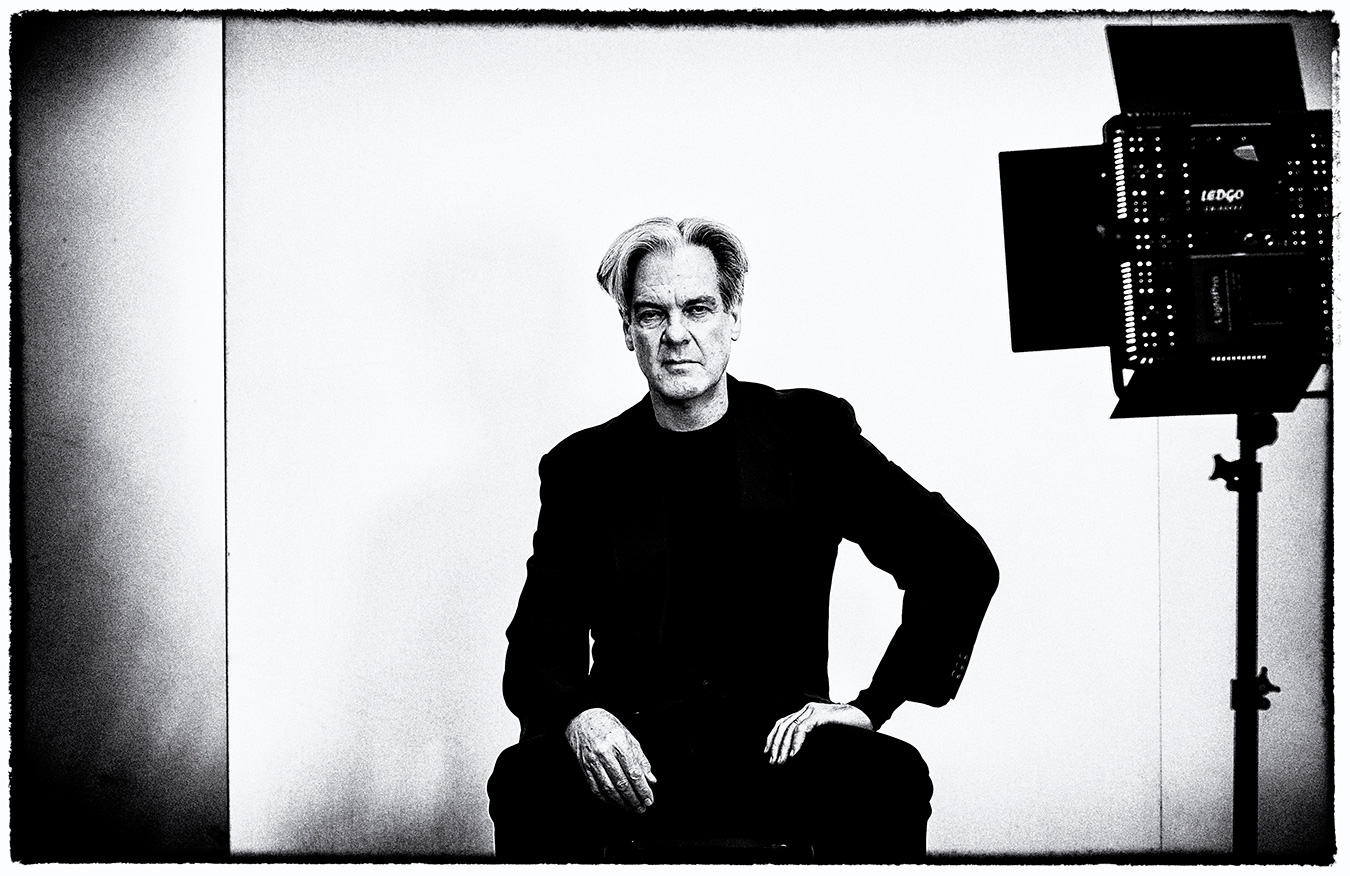
________
Don Walker 2018 by Wendy McDougall.
